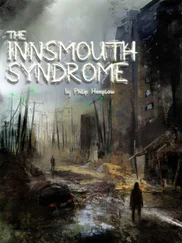Meanwhile, Father Smith had come down from his fire tower and the hospice was reopened.
Mr. and Mrs. Brunette were assigned to the Alzheimer’s patients, old addled folk who could not take care of themselves and in whom no one, not even the Brunettes, could take the slightest sexual interest. It was a hunch, mine and Father Smith’s, and it paid off. The Brunettes went to work willingly and in good heart. Father Smith says they are a caring couple. What he actually said was: “Paroled murderers are the most trustworthy aides but sex offenders and child abusers are also excellent, once occasions of sin are removed.”
Mrs. Cheney works as a nurse’s aide in a ward of malformed infants, formerly candidates for pedeuthanasia. An excellent babysitter for twenty years — I so testified — she was and is never otherwise than her old motherly and solicitous self toward the children. And even though she persisted for some weeks in her odd rearward presenting behavior as the effects of the sodium ions wore off, there was no one to present to on the children’s ward.
Coach also found his talents put to good use. He was assigned to the AIDS wing, which housed not only dying adult patients but also, in a separate cottage, a little colony of LAV-positive children, that is, children who harbored the virus but were not sick. Neither I nor any other physician considered them a threat, but since federal law requires quarantine, what to do with them? Coach did plenty. He is, after all, an excellent coach. His sexual preferences were no problem. The dying adults were too weak to bother him, and he was too terrified to bother them. In a word, he was good with them, didn’t have to feign sympathy, was willing to talk and listen. He organized card games, skits, and sing-alongs. But the children were the challenge. He formed a soccer team which, since soccer is not a contact sport, was eligible for Little League competition. His Jolly Rogers (smiling death’s-head insignia) are undefeated, have every prospect of winning the league and being invited to the Special Olympics in San Francisco.
Van Dorn, however, was a difficult case. He did not recover as rapidly as the others. Perhaps he ingested a more massive dose of sodium additive and suffered brain damage.
Anyhow, he had to be detained in the Forensic Hospital. When anyone approached, he would at first rattle the bars, roar, and thump his chest. Then, after this ruckus, he would knuckle over to the toilet and cower behind it. He became abject. What to do, legally or medically? No statute could be found to fit his case. Nothing in the Louisiana Civil Code seemed applicable. No medical or psychiatric diagnosis could be arrived at.
What to do with Van Dorn?
Months passed. Van Dorn gave up roaring and thumping, instead knuckled across his cell, crouched behind the toilet, and gave up eating.
I had an idea. It came to me by luck and happenstance — like most good scientific ideas.
It came to me one day while I was making my weekly visit to the Tulane Primate Center, where I earn a few needed dollars — my practice having gone to pot — by doing CORTscans on the primates housed therein. It is part of an FDA program to test for toxic side effects of new drugs on brain function.
The director, Dr. Rumsen “Rummy” Gordon, old friend and classmate, was showing me around the place, a pleasant compound of piney woods and oak groves which housed colonies of rhesus monkeys, chimps, orangutans, and a single gorilla.
The gorilla, a morose female named Eve, was a special case. She was the last of the so-called talking apes, the famous chimps and gorillas who were supposed to have learned sign language but had been given up on and so had lapsed from fame to obscurity. It was not clear whether they had learned sign language after all, or whether, if they had, they had grown weary of it, even abusive, and stopped talking, and their teachers weary of them. At any rate, in the end for lack of funding these world-famous apes were either packed off to zoos or to the wilds of Zaire, where, it was hoped, they might be accepted by their native cousins.
Only Eve remained, and only Rummy Gordon persisted in his conviction that apes could be taught sign language — not merely to signal simpleminded needs like Tickle Eve, Eve want banana, Eve want out, Rummy come play —but to learn to tell stories, crack jokes, teach language to their young, and so on.
But Eve, like the others, fell silent, no longer greeted Rummy with a happy hopping up and down and a flurry of signs, and took to her bower in the low crotch of a live oak.
“She won’t sign, not even for bananas,” sighs the disconsolate Rummy as we gaze up at Eve, supine and listless on her bed of bamboo leaves, one arm trailing down, one leg sticking straight up, for all the world like a catatonic patient on a closed ward. “In fact, she won’t eat bananas, period.”
“Rummy, I’ve got an idea.”
He thinks I’m joking at first. “Cut it out, Tom,” he says with a wan smile. “I’m serious.”
“So am I. Look. This is a lovely spot and enclosed — you’d be taking no chances.” It is a lovely spot, a half acre of live oaks and pines, and even a brooklet. If it were listed by any realtor in Feliciana, it would be called a ranchette and go for at least $300,000.
“You’ve got to be kidding—” But I see he’s taking it seriously. “How do you know they would get along. She could kill him. Eve weighs in at about 250.”
“I have a hunch, Rummy. A strong hunch. I think it would work. To be on the safe side, we’ll watch them at first.”
“My God.” But he’s thinking. “Let me look into the insurance.” He’s shaking his head. “No way.”
In the end he’s convinced by a single argument: It’s his only chance to revive Eve’s language. I know his weak spot. “Don’t you see, Rummy? As Van Dorn recovers, they can communicate.”
“How? He doesn’t know sign language, let lone Ameslan.” Ameslan is the special sign vocabulary apes are taught.
“That’s the point,” I say, watching him. I think I’ve got him.
“Oh. You mean—” He’s got it! His eyes are alight. “She teaches him!”
He’s got it: she teaches him!
“It hasn’t been done before, not even ape teaching ape, has it? Isn’t that the big breakthrough you’ve been trying for? Wouldn’t it prove your detractors wrong once and for all?”
He’s tapping his lips, casting ahead. I’ve got him. “Why not,” he says finally. “We could put a metal hut in there in case he doesn’t take to the bower. He might even get her into the hut,” he muses.
Why not?
To make a long story short, he did it. They did it. Van Dorn joined Eve in her idyllic ranchette. After a good deal of wary knuckling and circling, baring of teeth, they made friends. For of course mountain gorillas, the species Gorilla gorilla, are gentle creatures despite the chest thumping and roaring, which are mainly for sexual display by males and for scaring off predators. And Van Dorn was no predator. Eve smacked her lips, a good sign. Presenting often follows. They, Eve and Van Dorn, spent the brisk fall days playing, romping about the compound, or taking long siestas in the live oak. She gave him a hand up to the crotch. On chilly nights she allowed herself to be led into the hut, which she converted to a proper bower by weaving bamboo shoots over it. They were observed signing to each other in Ameslan, the sign language of the deaf, Eve signing first, Van Dorn watching closely, then venturing a tentative sign in return.
It lasted two months — in a word, until Van Dorn recovered. Having recovered his humanity, become his old self, his charming, grandiose, slightly phony Confederate self, he summoned Rummy Gordon in ordinary Mississippi English and expressed his desire to rejoin his own kind, was released to Sheriff Sharp, examined, found competent to stand trial, was tried, convicted, and sentenced to Angola for ten years.
Читать дальше












